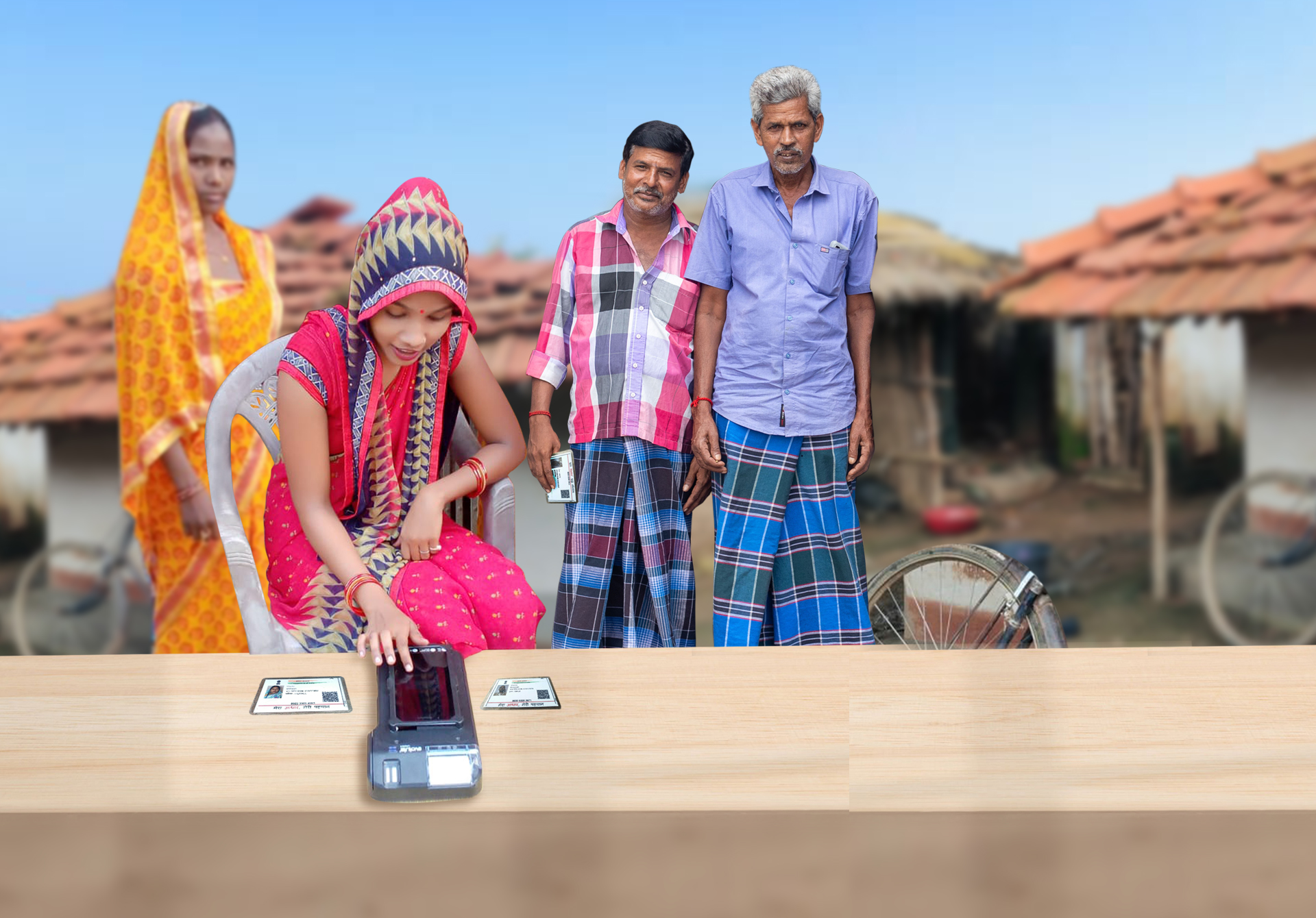Financial inclusion, the accessibility, and availability of financial services to all individuals and businesses, plays a pivotal role in driving economic growth and reducing poverty. While urban areas have seen significant progress in digital financial services, rural communities often remain excluded due to limited access to banking infrastructure. However, technology is bridging this gap, and a key player in this transformation is the use of Micro ATMs terminals. These devices are transforming the way financial transactions occur in rural India, enabling digital transactions and empowering financial inclusion.
The Need for Financial Inclusion in Rural India
Rural communities in India face numerous challenges in accessing formal financial services. Limited access to banking facilities, low literacy rates, and lack of awareness about digital finance contribute to the exclusion of these communities from the formal financial ecosystem. Additionally, the dominance of cash transactions further hampers their ability to access credit, save money, and engage in digital commerce.
The impact of this exclusion is significant. Without access to financial services, rural individuals are often vulnerable to exploitation by informal lenders and face difficulties in managing risks and emergencies. The absence of secure savings and payment options also impedes economic growth at the grassroots level.
Unveiling the UNICEF Story
Technology and innovation are driving significant change, as demonstrated by a recent initiative undertaken by UNICEF India and Sakhi project at Anganwadi’s in Uttar Pradesh. At the heart of this transformative effort is the remarkable product called Leopard—an integrated Micro-ATM Tablet from Evolute that is making a profound impact in remote and rural areas, empowering women across the region.
Leopard, created by the innovative minds at Evolute Fintech Innovations, represents progress and inclusivity. This powerful initiative is transforming the lives of young girls and women in urban and rural India. Through the Banking Sakhi program, women in these communities are empowered to become banking agents, offering vital financial services like deposits, withdrawals, loan collection, and more. This empowering initiative gives them a sense of purpose and strengthens their community’s financial stability.
The impact of Leopard and the Banking Sakhi initiative is significant, reaching far beyond expectations. This technology has empowered women to become the bedrock of financial stability in their villages. Gone are the days when villagers had to embark on arduous journeys to distant cities in search of elusive ATMs. Instead, they now have convenient access to banking services right at their doorstep.
On a recent visit to these villages, Priyanka Chopra, Goodwill Ambassador of UNICEF, interacted with a Banking Sakhi and was deeply impressed by the transformative potential of the Leopard Micro ATM product from Evolute. Priyanka commended our unwavering dedication and efforts in bringing about a revolution in banking and empowering communities through access to financial services. This story serves as an inspiring example. It showcases how technology and innovation drive empowerment and progress. It presents a unique model of financial inclusion that sets new standards worldwide, not just in India. The impact of this transformation goes beyond economics; it deeply affects individuals’ personal lives, fostering responsibility and a sense of community spirit.
Through the collaboration of UNICEF, local financial institutions, and Micro ATM manufacturers, we have introduced terminals in villages. This initiative allows villagers to seamlessly accept digital payments through Leopard, a Tablet integrated Micro ATM. By implementing this system, we not only save time but also ensure the safety of earnings for the villagers.
In a world where technology shapes the future, the Evolute powered Banking Sakhi initiative showcases how innovation empowers women and inspires village communities to embrace digital transactions. It serves as a symbol of hope and progress, guiding us towards a brighter and more inclusive future for all.
Empowering Financial Inclusion Through Micro ATM
Micro ATMs, Micro ATMs are a crucial tool in the drive towards financial inclusion, helping marginalized populations gain access to essential banking services, improve their financial wellbeing, and contribute to economic growth in their communities. The significance of Micro ATMs in rural India is threefold:
1. Accessibility and Convenience: Micro ATMs extend banking services to rural and remote areas where traditional bank branches are scarce or non-existent, bridging the urban-rural financial divide.
2. Financial Literacy: The use of Micro ATMs can enhance financial literacy in underserved communities, as users become more familiar with basic financial concepts and digital transactions.
3. Economic Growth and Livelihood Improvement: Access to financial services through Micro ATMs can stimulate economic growth in rural areas by providing individuals and businesses with the tools they need to save, invest, and access credit. This growth, in turn, translates into better livelihoods for individuals and families.
The Path Forward: Collaborative Efforts
The success of promoting financial inclusion through Micro ATM is a result of collaborative efforts between various stakeholders. Micro ATM manufacturers, financial institutions, NGOs, and government bodies are working together to ensure that these devices reach the farthest corners of rural India.
Government initiatives like the Pradhan Mantri Jan Dhan Yojana (PMJDY) have also played a pivotal role in creating a foundation for financial inclusion. By opening bank accounts for every household and providing access to basic financial services, these initiatives have paved the way for technologies like Micro ATM to make a more profound impact.
Benefits and Impact of Micro ATM in Rural Communities:
1. Financial Inclusion: Micro ATMs have expanded access to basic banking services for rural populations, including those without traditional bank accounts.
2. Cash Withdrawals: Rural residents can withdraw cash from their bank accounts at local retail outlets or banking correspondents using Micro ATMs, reducing the need to travel long distances to banks.
3. Cash Deposits: Micro ATMs allow users to deposit cash into their bank accounts, promoting savings and reducing the risk associated with keeping large amounts of cash at home.
4. Balance Inquiries: Rural customers can check their account balances and transaction history conveniently at Micro ATMs, helping them keep track of their finances.
5. Fund Transfers: Micro ATMs enable fund transfers between bank accounts, facilitating remittances from family members working in urban areas to their rural counterparts.
6. Government Benefit Disbursement: Government subsidies, welfare payments, and pension disbursements can be made efficiently through Micro ATMs, reducing leakages and ensuring beneficiaries receive their entitlements.
7. Digital Literacy: The use of Micro ATMs has encouraged digital literacy in rural areas as users become familiar with basic banking and digital payment processes.
8. Reduced Cash Handling: The prevalence of Micro ATMs has reduced the reliance on physical cash, which can be prone to theft and loss.
9. Revenue Generation for Retailers: Local shopkeepers or retailers who serve as Micro ATM agents earn commissions on transactions, providing an additional source of income for them.
10. Improved Security: Reduced cash handling and increased digital transactions contribute to improved security for both customers and businesses in rural areas.
11. Credit Access: Micro ATMs help banks assess the creditworthiness of rural customers, potentially increasing their access to loans and other financial services.
12. Data Collection: Micro ATMs facilitate the collection of financial data in rural areas, aiding banks and policymakers in understanding the needs of these communities.
Lessons for the Global Community:
1. Relevance to Other Developing Countries: Ethiopia & Nepal: The success of financial inclusion efforts in India, including the use of Micro ATM, provides valuable lessons for other developing countries like Ethiopia and Nepal. These countries can learn from India’s approach and adapt it to their unique contexts.
2. Key Takeaways and Lessons: The success of promoting financial inclusion through Micro ATM highlights the importance of multi-stakeholder partnerships. Collaboration between technology providers, financial institutions, NGOs, and government bodies is essential for creating a sustainable ecosystem.
3. Innovative Approaches: Innovations such as combining Micro ATM introduction with financial literacy programs can help individuals understand the benefits of digital transactions and enhance their overall financial literacy.
4. Importance of Trust and Education: Beyond technology, building trust among rural communities and providing education about digital finance are critical components of successful financial inclusion efforts. This can lead to greater adoption and sustained usage of digital payment methods.
In conclusion, the introduction of Micro ATMs has revolutionized rural India’s financial landscape. These devices have significantly improved convenience, security, and record-keeping for individuals and businesses, fostering robust economic growth and advancing financial inclusion. The success stories, government initiatives, and regulatory support that have propelled this transformation provide a powerful blueprint for other developing nations to follow. At Evolute Fintech Innovations, we are proud to be at the forefront of this financial revolution, offering a comprehensive suite of cutting-edge products and solutions in this domain. Our commitment to innovation and collaboration underscores our mission to empower individuals and communities worldwide through inclusive, accessible, and transformative financial technologies. Join us in shaping the future of finance and accelerating progress for all.





